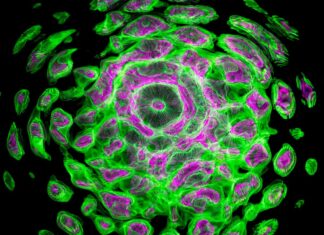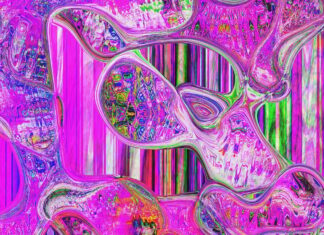Retinaldehyde, also known as retinal, is a form of vitamin A that is commonly used in skincare products for its anti-aging and skin-renewing properties. In this guide, we’ll explore everything you need to know about retinaldehyde, including its benefits, uses, potential side effects, and tips for incorporating it into your skincare routine.
1. What is Retinaldehyde?
Retinaldehyde is a derivative of vitamin A, which is a potent antioxidant that plays a crucial role in maintaining healthy skin. It is a precursor to retinoic acid, the active form of vitamin A that is commonly used in prescription-strength skincare products. Retinaldehyde is milder and less irritating than retinoic acid, making it suitable for sensitive skin types.
2. Benefits of Retinaldehyde:
Retinaldehyde offers a wide range of benefits for the skin, including stimulating collagen production, increasing cell turnover, and improving the appearance of fine lines, wrinkles, and hyperpigmentation. It also helps to regulate oil production, reduce inflammation, and promote a more even skin tone. Additionally, retinaldehyde has antioxidant properties that help protect the skin from environmental damage and premature aging.
3. How Retinaldehyde Works:
Retinaldehyde works by converting into retinoic acid once it is absorbed into the skin. Retinoic acid then binds to specific receptors in the skin cells, stimulating them to produce collagen and elastin, which are essential proteins for maintaining firmness and elasticity. It also helps to normalize cell turnover, leading to smoother, more radiant skin over time.
4. Uses of Retinaldehyde in Skincare:
Retinaldehyde is commonly used in skincare products such as serums, creams, and treatments designed to target signs of aging, acne, and hyperpigmentation. It can be used as part of a daily skincare routine or incorporated into more intensive treatment regimens for specific concerns. Retinaldehyde is often recommended for individuals with sensitive skin who may not tolerate stronger retinoids.
5. Potential Side Effects of Retinaldehyde:
While retinaldehyde is generally well-tolerated by most skin types, it can cause mild irritation, dryness, and peeling, especially when first starting to use it. It is important to start with a lower concentration of retinaldehyde and gradually increase the frequency of use to minimize the risk of side effects. It is also essential to use sunscreen during the day when using retinaldehyde, as it can increase the skin’s sensitivity to the sun.
6. Tips for Incorporating Retinaldehyde into Your Skincare Routine:
When incorporating retinaldehyde into your skincare routine, start by using it every other night or every few nights to allow your skin to acclimate to the ingredient. Begin with a lower concentration of retinaldehyde and gradually increase the strength as your skin becomes accustomed to it. Always follow up with a moisturizer to help hydrate and soothe the skin, and be sure to use sunscreen during the day to protect your skin from sun damage.
7. Choosing the Right Retinaldehyde Product:
When choosing a retinaldehyde product, look for one that contains a stable form of retinaldehyde, such as encapsulated retinaldehyde, which helps to protect the ingredient from oxidation and degradation. Consider the concentration of retinaldehyde in the product, as higher concentrations may be more effective but also more likely to cause irritation. Additionally, opt for products that are formulated without potentially irritating ingredients, such as fragrances, dyes, and alcohol.
8. Potential Interactions with Other Skincare Ingredients:
Retinaldehyde may interact with certain skincare ingredients, such as alpha hydroxy acids (AHAs) and beta hydroxy acids (BHAs), which can increase the risk of irritation and sensitivity. It is best to avoid using retinaldehyde in combination with other potent actives, such as benzoyl peroxide and vitamin C, as they may further exacerbate irritation. If you are unsure about how to incorporate retinaldehyde into your skincare routine, consult with a dermatologist or skincare professional for personalized recommendations.
9. Considerations for Pregnancy and Breastfeeding:
Pregnant or breastfeeding individuals should exercise caution when using retinaldehyde, as high doses of vitamin A derivatives have been associated with potential harm to the developing fetus or infant. It is best to consult with a healthcare provider before using retinaldehyde during pregnancy or breastfeeding to ensure the safety of both you and your baby.
Retinaldehyde, as a derivative of vitamin A, has gained popularity in skincare for its ability to address a variety of skin concerns, including signs of aging, acne, and hyperpigmentation. Its mild yet effective nature makes it suitable for individuals with sensitive skin who may not tolerate stronger retinoids. When using retinaldehyde, it’s important to start with a lower concentration and gradually increase frequency to minimize the risk of irritation. Additionally, incorporating sunscreen into your skincare routine is essential, as retinaldehyde can increase the skin’s sensitivity to the sun. Choosing a stable retinaldehyde product with encapsulated formulation can help protect the ingredient from oxidation and degradation, ensuring optimal efficacy. It’s also crucial to avoid using retinaldehyde in combination with other potent actives, such as AHAs, BHAs, benzoyl peroxide, and vitamin C, to prevent potential interactions and irritation. While retinaldehyde offers numerous benefits for the skin, pregnant or breastfeeding individuals should consult with a healthcare provider before use to ensure safety for both mother and baby. Overall, understanding how to properly incorporate retinaldehyde into your skincare routine can help you achieve smoother, more radiant skin with minimal risk of irritation.
Retinaldehyde, a derivative of vitamin A, offers numerous benefits in skincare, including addressing aging signs, acne, and hyperpigmentation. Its mild nature suits sensitive skin, but gradual introduction and sunscreen use are essential to minimize sensitivity and sun sensitivity. Encapsulated formulations enhance stability, while avoiding potent actives like AHAs, BHAs, benzoyl peroxide, and vitamin C reduces potential irritation. Pregnant or breastfeeding individuals should seek medical advice before use. Overall, understanding retinaldehyde’s proper use can yield smoother, radiant skin with minimal side effects.
10. Conclusion:
Retinaldehyde is a potent yet gentle skincare ingredient that offers a wide range of benefits for the skin, including reducing signs of aging, improving texture and tone, and minimizing breakouts. By understanding how retinaldehyde works and how to incorporate it into your skincare routine safely, you can reap the rewards of this powerful anti-aging ingredient while minimizing the risk of irritation and sensitivity. As always, it is essential to listen to your skin and adjust your routine as needed to achieve the best results.






















